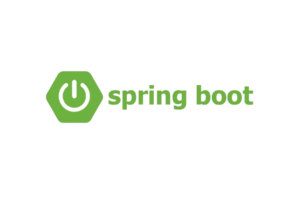A few months ago, we began an incredible journey into the world of Java through a compelling retrospective written in collaboration with Danilo Ventura, Senior Software Engineer at Bitrock.
Enjoy the fourth and last episode following below!
In 2014 a revolutionary new version of Java arrived. All versions of Java are backward compatible, meaning that sources generated with a new version of Java are executable on older Java VMs. This revolutionary version of Java 8 allows for a leap in functional languages. So come many new tools such as streams, lambda expressions, optionals to write more functional code using both the object-oriented paradigm and the functional paradigm. Java 8 was really a milestone because it gave birth to new constructs and many Java developers took years to get used to it.
The first Java application framework like Spring Boot
From now on, Java is used to create services and for web applications. The first Java frameworks begin to emerge to quickly create applications that provide Rest Json services. For convenience, we will mention only the most important one: Spring Boot. The latter is based on a leaner library that was precisely Spring (launched in 2016) and made developers’s life easier allowing not to use the complex EJBs but to create JARs able to self-execute, without installing a server and running it.

Cloud, Container and Docker
It is precisely with this in mind that a new revolution takes place, that of the cloud and containers. Before, servers and their maintenance were ‘in house’ – just think of banks and insurance companies; right around this time, the concept of Cloud was born mainly with giants such as Amazon, Google, and Microsoft providing the necessary tools to create ‘machines’ on the web where you can install everything you need to run your website or web application. In this way, all the maintenance of the ‘(virtual) machine’ is entrusted to the Cloud Manager.
The other major aspect is the container, since it changes the way applications are distributed. The distribution, indeed, is now published through a container that can be basically seen as a ‘machine’ with an operating system inside and a container executor called Docker that guarantees the security and functionality of the application.

“Write once, run anywhere (WORA)” or not?
All of this shakes the concept and motto of Java: “Write once, run anywhere“. If the application can be distributed in a container with the preferred operating system, what are the advantages of still using Java? Indeed, there are none and this is precisely the reason why new and alternative languages emerged such as Rust and Google’s GO whose container takes 5 milliseconds to start – instead of Java, which needs 30 seconds.
It seems like Java in this Cloud Native world would have no future. Actually, it was not true. Along comes a super revolutionary technology in Java: the GraalVM, which allows native code to be generated from bytecode of any type. So a bytecode starting from a source of any type – Java, C – is created for a special virtual machine which is precisely the GraalVM capable of generating an executable file for a given operating system. Why is it revolutionary? Java can be used to create a container with an executable in it that can start in times comparable to services written in GO.
Java continues to move forward by adapting to new frameworks that allow services to be written directly cloud-native. For instance, one noteworthy framework is Quarkus, which allows the generation of cloud-native containers that can run on Docker or any container orchestrator.
The new frontier of Web 3.0
We are on the threshold of Web 3.0, and the new frontier is the blockchain-based web. Perspectives are starting to change and new architectures are being released: server-side, there will no longer be a single server managed by a platform. Just to give you an example: YouTube is run by Google, owned by Google, and the videos that are uploaded are on Google’s servers as well as owned by Google.
With Web 3.0, the perspective changes, since the platform is not owned by a single owner anymore, but distributed on the blockchain.
In line with the times and needs, the Web continues to evolve while facing many difficulties and uncertainties. How will Java adapt to this new type of architecture? We will see! In the meantime, we can say that we are not standing still but moving with this evolution; there are already several pieces of evidence, such as new framework libraries (e.g. Spring) that allow interaction with popular blockchains.
We have come to the end of this fourth and final episode of the retrospective dedicated to Java. We thank Danilo Ventura for sharing his valuable insights on Java technologies and wrapping up 20 years of web history.
Follow us on LinkedIn and stay tuned for upcoming interesting technology articles on our blog!

